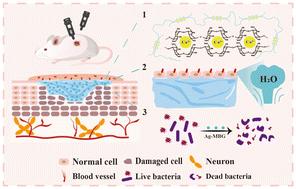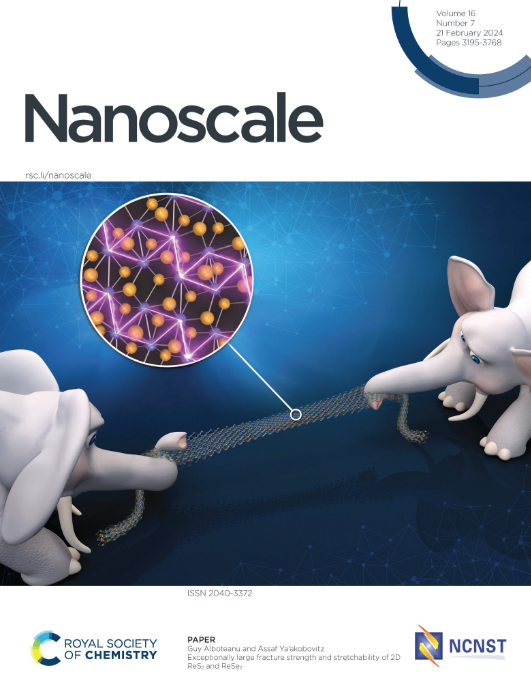Top-down curing to construct self-retaining and moisture-pumping double-layered dressing with enhanced antibacterial, hemostatic, and wound healing performances
IF 5.8
3区 材料科学
Q1 CHEMISTRY, MULTIDISCIPLINARY
引用次数: 0
Abstract
Continuous microenvironment modulation is an ongoing challenge in wound dressing, which includes excessive exudate absorption, oxygen delivery, bacterial inhibition and angiogenesis. Herein, we developed an in situ construction strategy to fabricate a self-retaining double-layered wound dressing, where the top layer precursor was composed of Ca2+-containing polyvinyl butyral (PVB) solution dispersed with hydroxypropyl methylcellulose (HPMC) particles, and the bottom one consisted of sodium alginate (Alg) solution blended with Ag-doped mesoporous bioactive glass powders (Ag-MBG). When in use, both precursors were simultaneously squeezed out from the twin nozzles connected to the individual chambers of a twin-chambered syringe, whereby Ca2+ in the top layer rapidly migrated downwards to crosslink Alg in the bottom layer, leading to the formation of an Alg/Ag-MBG (AA) functional hydrogel for filling an irregular wound. Meanwhile, with the rapid evaporation of low-boiling solvents, the top layer changed into a PVB/HPMC (PH) membrane covering the AA hydrogel and adhering to the surrounding healthy skin to fix the dressing. Practically, HPMC particles in the top layer acting as “micropumps” could drain the wound exudate out, while Ag-MBG in the bottom layer endowed the dressing with anti-bacterial, hemostatic, and pro-healing functions. The integrally constructed PH-AA dressing achieved over 99% bacterial elimination against both E. coli and S. aureus. Biological assessments indicated that the double-layered dressing possessed excellent biocompatibility and enhanced wound healing, demonstrating a wound closure rate of >97% at day 15. This study provides a facile method to directly construct multi-layer dressings on wounds to meet various wound care requirements.

求助全文
约1分钟内获得全文
求助全文
来源期刊

Nanoscale
CHEMISTRY, MULTIDISCIPLINARY-NANOSCIENCE & NANOTECHNOLOGY
CiteScore
12.10
自引率
3.00%
发文量
1628
审稿时长
1.6 months
期刊介绍:
Nanoscale is a high-impact international journal, publishing high-quality research across nanoscience and nanotechnology. Nanoscale publishes a full mix of research articles on experimental and theoretical work, including reviews, communications, and full papers.Highly interdisciplinary, this journal appeals to scientists, researchers and professionals interested in nanoscience and nanotechnology, quantum materials and quantum technology, including the areas of physics, chemistry, biology, medicine, materials, energy/environment, information technology, detection science, healthcare and drug discovery, and electronics.
 求助内容:
求助内容: 应助结果提醒方式:
应助结果提醒方式:


